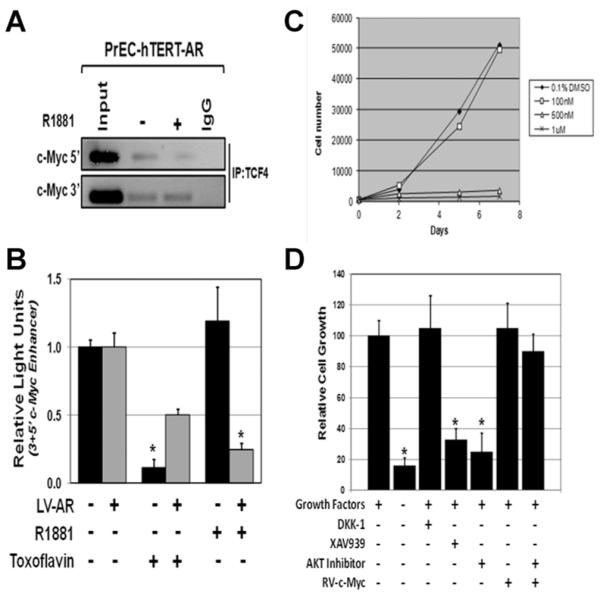Fig. 6.

(A) Chromatin immunoprecipitation (ChIP) documents that TCF-4 continues to bind the 3′ c-MYC enhancer elements of the c-MYC gene even in the presence of ligand-activated AR, but there is a decrease binding to the 5′ c-MYC enhancer element. (B) Ligand-activated AR and toxoflavin inhibition of β-catenin/TCF-4 complex formation inhibits the transcriptional activity of the 5′ plus 3′ c-MYC enhancer element using appropriate luciferase reporter constructs. (C) Toxoflavin dose-dependent growth inhibition of non-immortalized PrEC cells. (D) Growth response of PrEC-hTERT-LVAR cells to growth factor removal, Wnt inhibition (DKK1), or AKT inhibition (AKT-inhibitor) alone and in combination with constitutive c-MYC expression (RV-c-MYC), and to XAV939 induced inhibition of β-catenin signaling.
